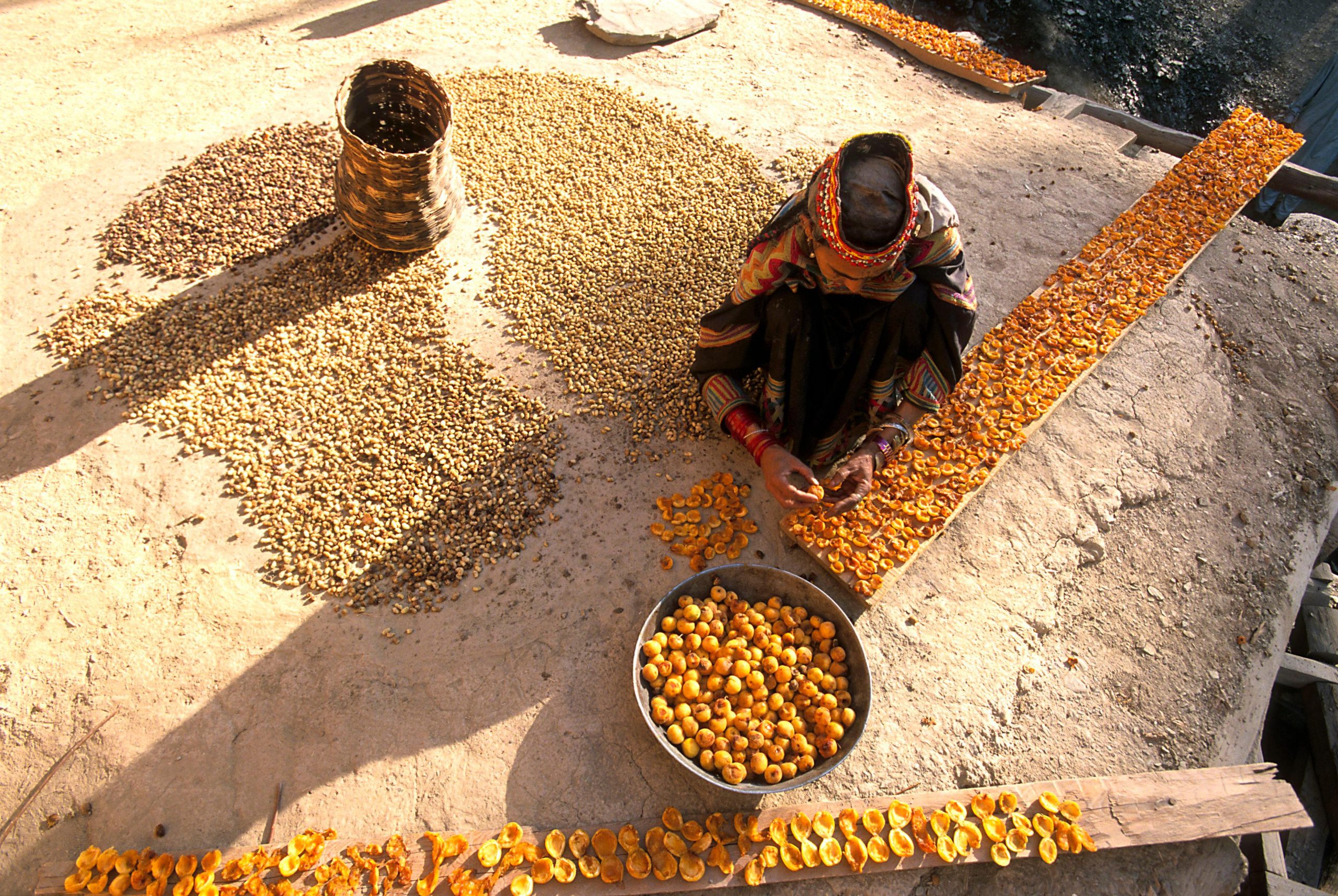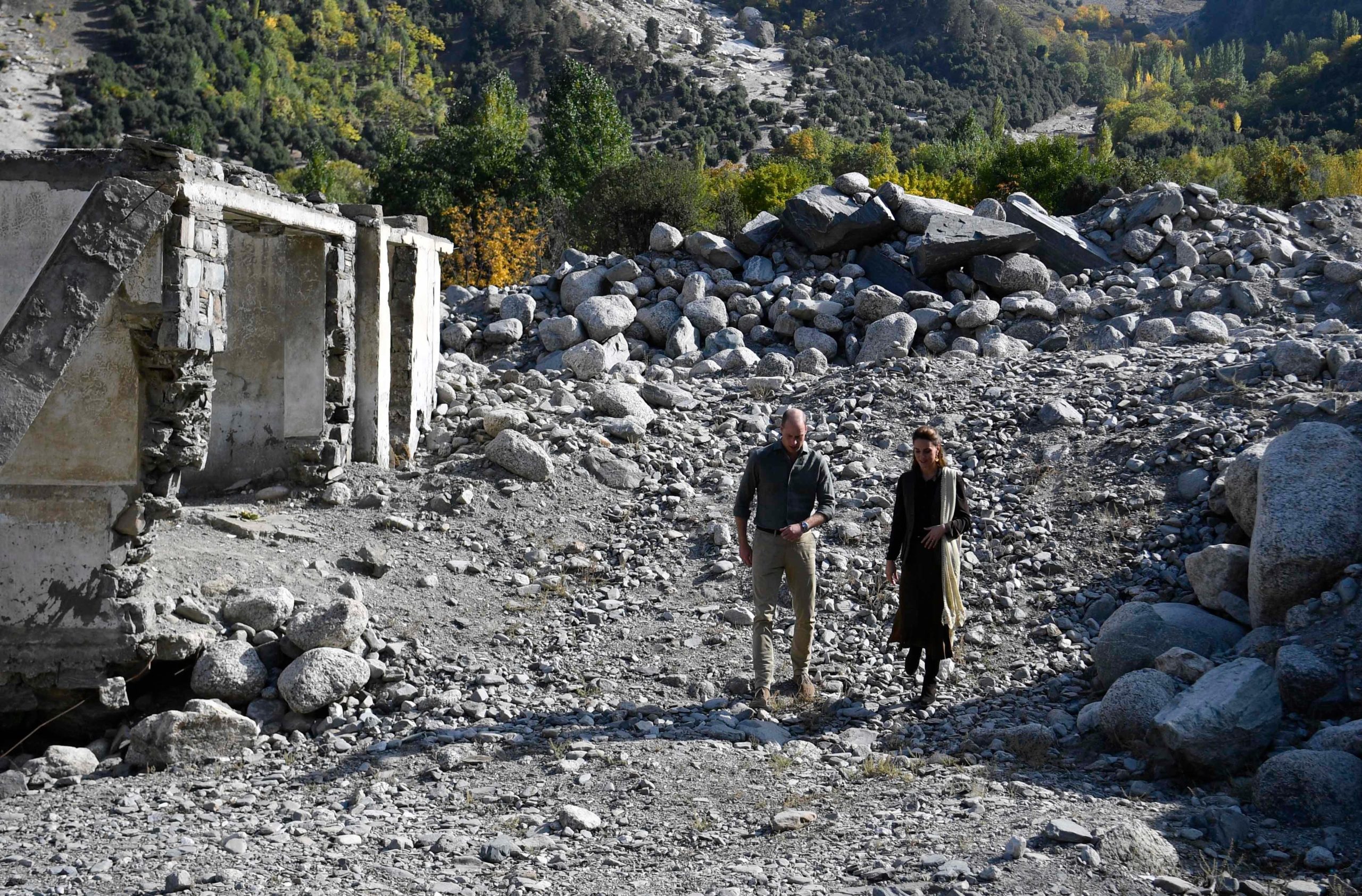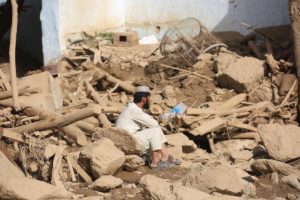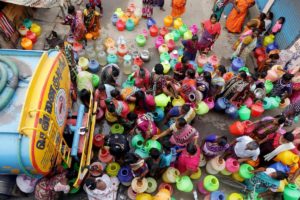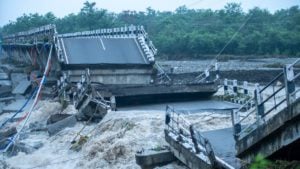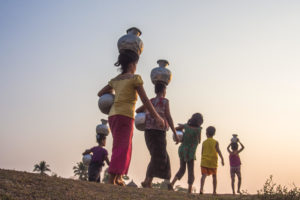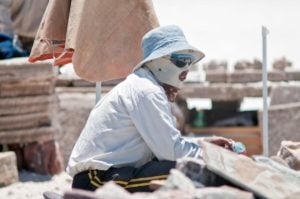The indigenous Kalash community has thrived for centuries in the valleys of Pakistan’s northern Khyber Pakhtunkhwa province, drawing the world’s attention with its colourful festivals and polytheist traditions. Numbering 3,000 to 5,000 people living in Chitral district, the Kalash are reeling from the impacts of climate change. Those impacts have accelerated here during the past decade, many of them exacerbated by excessive deforestation in these very valleys.
Residing in the remote Rumbur, Birir and Bumburet valleys of the Hindu Kush mountain range in Chitral district, the Kalash or Kalasha community is Pakistan’s smallest ethnoreligious minority group. The Kalash preserve an ancient way of life, including animist beliefs. In 1959, the Kalash population in Pakistan’s northern areas was estimated at 10,000. Today, the population is less than half that figure, largely as a result of conversions to Islam. The Kalash are largely shepherds and farmers, and a few own local businesses.
Hit by floods and accelerated warming
Noor Shahidin, a 60-year-old former landowner who now works at a guest house, hails from the indigenous Kalash community. One of many Kalasha who have lost their lands, he recalls the string of floods in the Bumburet valley since 2010.
Chitral was hit by flash floods in 2010, 2011, 2013 2015, 2020, 2022 and 2023. The successive disasters hit Kalash livelihoods hard: for centuries, the majority has relied on farming, tending to orchards, and herding as the primary sources of income.
Shahidin lost his two acres of fertile land in Bumburet – including 40 walnut trees – to the 2015 floods. “We used to have enough dry fruit, wheat and corn for the whole year. Now, I buy all these things,” he tells The Third Pole.
Once a serene village with a tranquil stream winding through lush green fields, Bumburet is now marred by heaps of rubble and colossal boulders. They serve as a haunting reminder of the natural disaster that reshaped this landscape.
“People who lost their lands are forced to buy food,” says Saifullah Jan Kalash, an environmental activist residing in Rumbur valley. “Those who lost their herd have to buy milk, and those who lost their orchards are now going to cities in search of employment to pay for these necessities.”
According to the Pakistan Meteorological Department, the annual mean temperature in Chitral rose by 0.9C between 1991 and 2022.
Afsar Khan is the deputy director of Khyber Pakhtunkhwa province’s Environmental Protection Agency. Khan tells The Third Pole that such a rise in temperatures has “unsettling impacts” on the community.
“The early melting of snow in these areas poses challenges for farmers,” says Khan. Raising concerns about the timing of crop cultivation, he wonders whether crops traditionally sown and grown in March could adapt to being sown a month earlier and still yield the expected output.
Khan highlights the emergence of new challenges associated with warmer temperatures. For example, the proliferation of different insects such as grasshoppers that prey on ripening grain could pose a threat to crops.
“The interplay of heatwaves and droughts has led to the parching of sun-exposed slopes due to deforestation,” adds Khan. “This, coupled with sudden rainfall, not only accelerates soil erosion but also escalates the vulnerability to landslides.”
Effects of deforestation
Deforestation in these valleys is widespread. Chitral’s district forest officer, Asif Ali Shah, acknowledges that it is a serious problem.
Shah tells The Third Pole that 150,000 permits are issued annually for tree cutting, a practice Saifullah Jan describes as a “curse” on the forests. In October 2011, a patrol party led by Shah challenged individuals involved in illegal logging. He says his team was “violently attacked, taken hostage for days, beaten black and blue and released after the district government intervened”.
Since trees are considered sacred and living beings, we use dry wood uprooted by winds for house construction and burningAjab Kalash, Chitral community member
The Third Pole speaks to Dr Naveed Anjum, the University of Peshawar’s assistant professor of geology. He says deforestation is exposing the slopes of Chitral’s valleys, which makes them susceptible to rain-induced erosion and landslides: “This also causes another type of mass wasting called solifluction, where soft, permeable rocks absorb rainwater that cannot permeate the ground beneath, increase in mass, then slide down as a big mass due to the absence of the trees that once held them in place.”
To make matters worse, climate change means Himalayan landslides are becoming more frequent.
Kalash representation
Aside from being exposed to disasters such as floods and landslides, the Kalash are also under threat from extremist groups like the Taliban. But despite climate and security concerns, the Kalash community is not a priority for Pakistan’s federal and provincial governments.
Unlike other minority groups in Pakistan, such as Sikhs or Hindus, the Kalash and their religion are not officially recognised in the country’s national database. This forces the Kalash to mark themselves as “other” on identity documents, which are vital in disaster-relief operations: assistance programmes are typically only available to those with official identity cards.
The Third Pole consulted Muhammad Ali, the deputy commissioner of Lower Chitral and director general of the Kalash Valleys Development Authority. He acknowledges that the community has not been properly compensated for past losses.
Protecting and working with nature
With governmental help seemingly lacking, the Kalasha are proactive in protecting themselves from disasters. Relying on their centuries-old worship of nature, self-governed Kalash committees patrol forests and report logging activities to the police, forest department and district administration.
A 2020 study on how the Kalash employ indigenous methods to mitigate disasters details how the community strives to limit natural resource exploitation. For example, Kalash dwellings are intentionally built at a distance from streams. “We never build homes or hotels on the bank of the river,” says Goshmir.
A community member named Ajab Kalash tells The Third Pole that “since trees are considered sacred and living beings, we use dry wood uprooted by winds for house construction and burning.” As a result Chitral’s holly oak trees (Quercus baloot), which can take up to 50 years to mature, remain undisturbed in the Kalash valleys, unlike in other parts of the district.
And in the absence of proper early-warning systems, Kalash wisdom is protecting them from the worst impacts of floods: the Kalash have perfected the art of detecting “the sound and scent of an approaching flood emanating from distant valleys”, according to Shahidin.
Meanwhile, the Kalash practice of Suri Jagek (“observing the sun”) helps them predict weather patterns. This is aiding climate change adaptation, because Suri Jagek allows them to gauge rainfall, then plan harvests and manage livestock accordingly.
Mushtaq Ahmad, a professor at the University of Peshawar’s Centre for Disaster Preparedness and Management, says the Kalash community uses the earthquake-resistant Dhajji Dewari construction system. The method relies on timber frames rather than masonry-bearing walls. This model was adopted in the reconstruction of Balakot after Pakistan’s 2005 earthquake.
According to Shahidin, the Kalash live by a rule passed down from their ancestors: “never mess with nature”.
